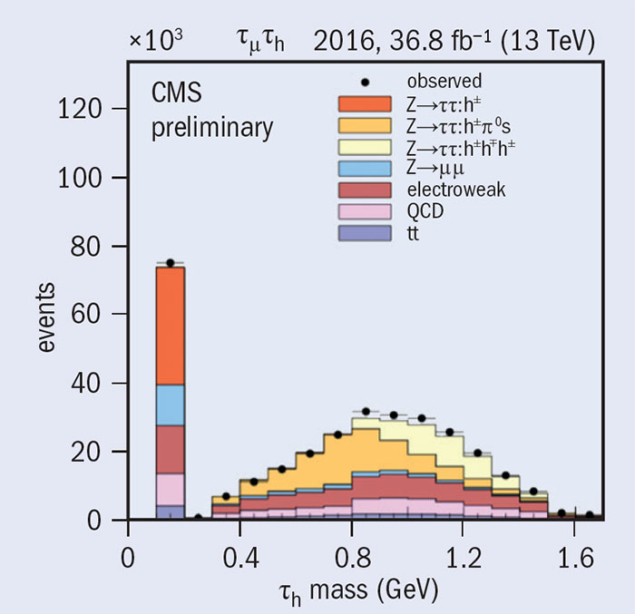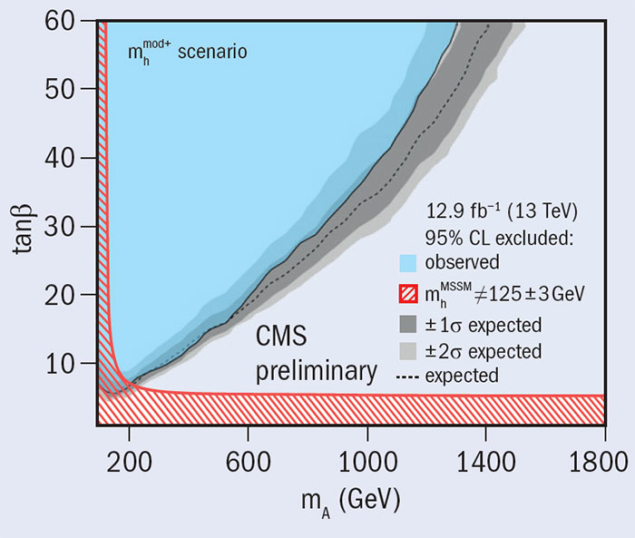
Recently, the CMS collaboration performed an updated search for a neutral Higgs boson decaying into two τ leptons using 13 fb−1 of data recorded during 2016. Although the existence of the Higgs has been established beyond doubt since its debut in the CMS and ATLAS detectors in 2012, the vast majority of Higgs bosons recorded so far concern its decay into pairs of bosons. Observing the Higgs via its decays into pairs of fermions further tests the predictions of the Standard Model (SM). In particular, τ leptons have played a major role in measuring the Yukawa couplings between the Higgs and fermions, and thus proved to be an important tool for discovering new physics at the LHC.
CMS first reported evidence for Higgs to ττ decays in 2014. With a lifetime of around 10–13 seconds and a mass of 1.776 GeV, τ leptons present a unique but challenging experimental signature at hadron colliders. Their very short lifetime means that τ particles decay in the LHC beam pipe before reaching the inner layers of the CMS detector. Approximately 35% of the time, the τ decays into two neutrinos plus a lighter lepton, while 65% of the time it decays into a single neutrino and hadrons. τ decays yield low charged and neutral particle multiplicities: more than 95% of the hadronic decays contain just one or three charged hadrons and less than two neutral pions. The primary difficulty when dealing with the τ is the distinction between genuine τ leptons and copiously produced quark and gluon jets that can be misidentified as taus.

To identify the dominant τ decay modes, CMS has developed a powerful τ reconstruction algorithm, which makes use of the single-particle reconstruction procedure (called particle flow). Charged hadrons are combined with photons from neutral pion decays to reconstruct τ decay modes with one or three charged hadrons and neutral pions (figure 1). The algorithm also pays particular attention to the effects of detector materials in converting photons into electron–positron pairs. The large magnetic field of CMS causes secondary electrons to bend, resulting in broad signatures in the phi (azimuthal) co-ordinate, and “strips” are created by clustering photons and electrons via an iterative process. In a new development for LHC Run 2, the strip size is allowed to vary based on the momentum of the clustered candidates.
Applying the latest τ algorithm, along with numerous other analysis techniques, CMS finds no excess of events in which a Higgs decays into two τ leptons compared to the expectation from the SM. Instead, upper limits were determined for the product of the production cross-section and branching fraction for masses in the region 90–3200 GeV, and the results were also interpreted in the context of the Minimal Supersymmetric SM (MSSM) (figure 2). The LHC is now operating at its highest energy and an increase in instantaneous luminosity is planned. The next few years of operations will therefore be vital for further testing the SM and MSSM using the τ lepton as a tool.
Further reading
CMS Collaboration 2014 JHEP 05 104.
CMS Collaboration CMS-PAS-TAU-16-002.







